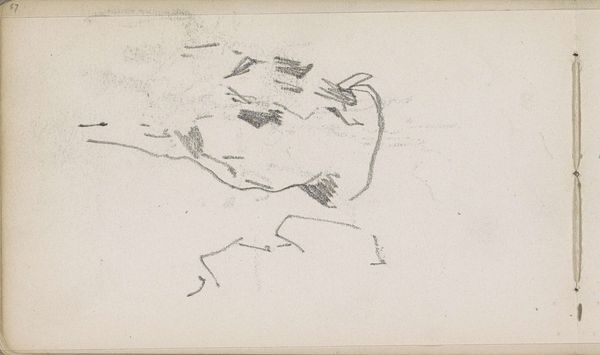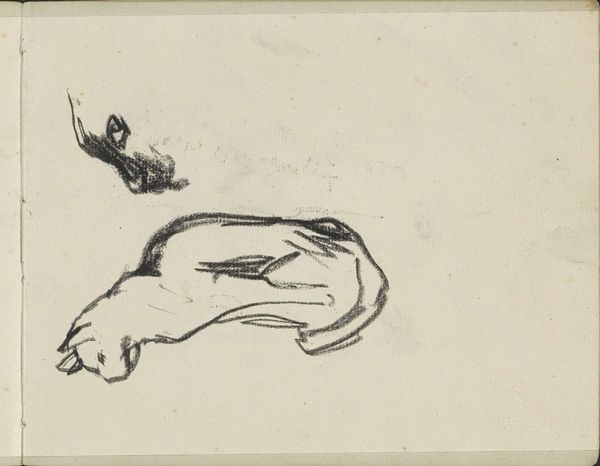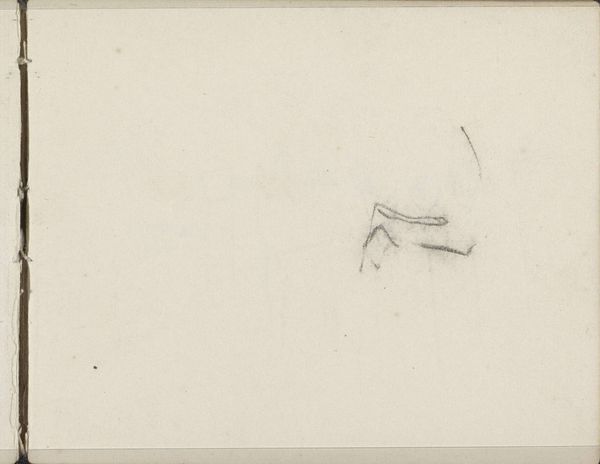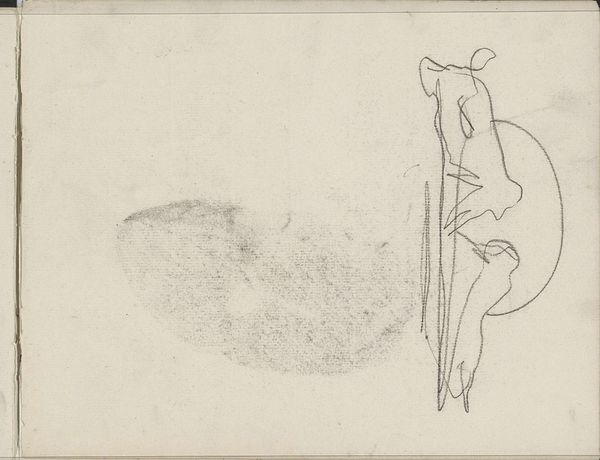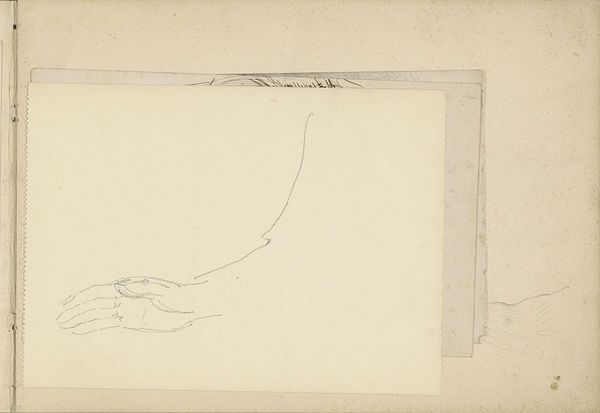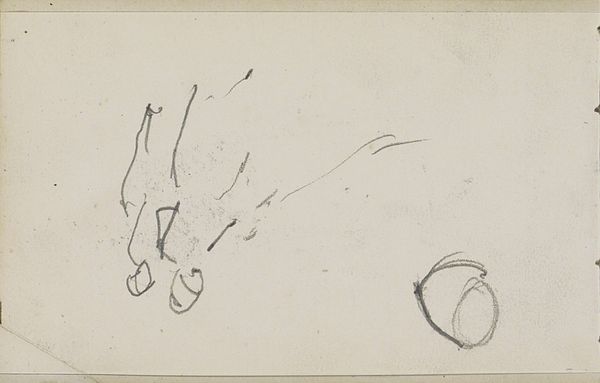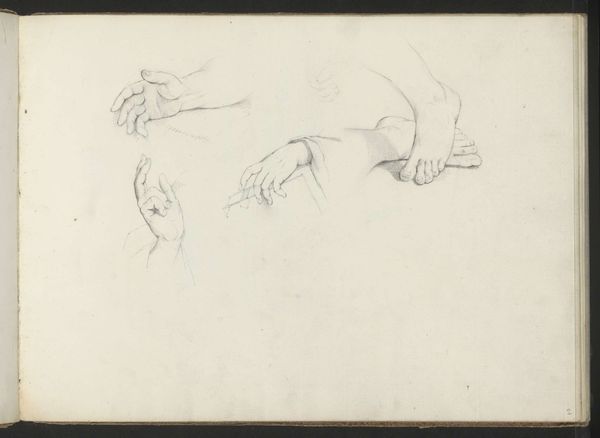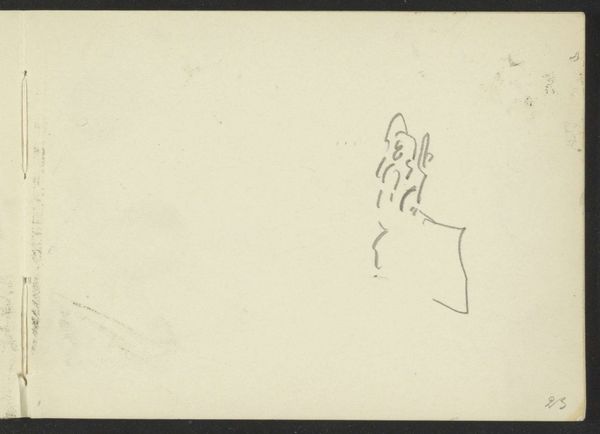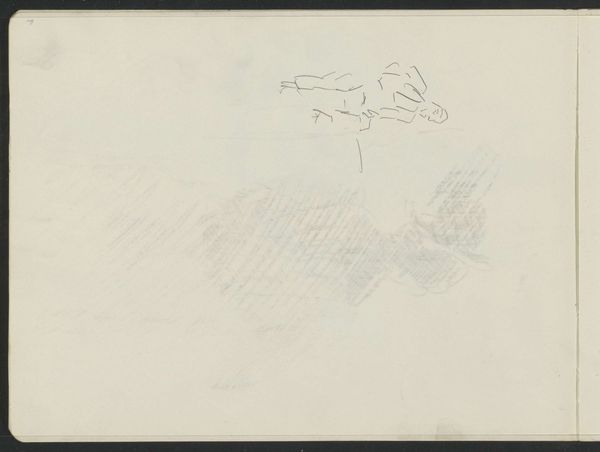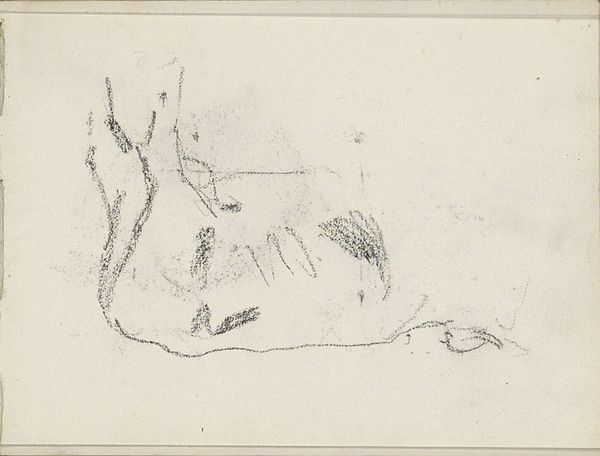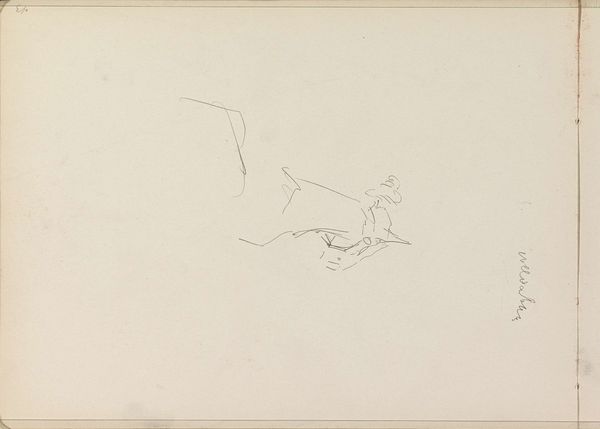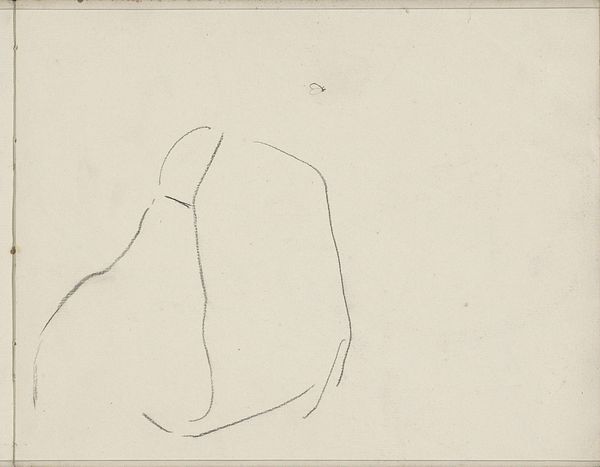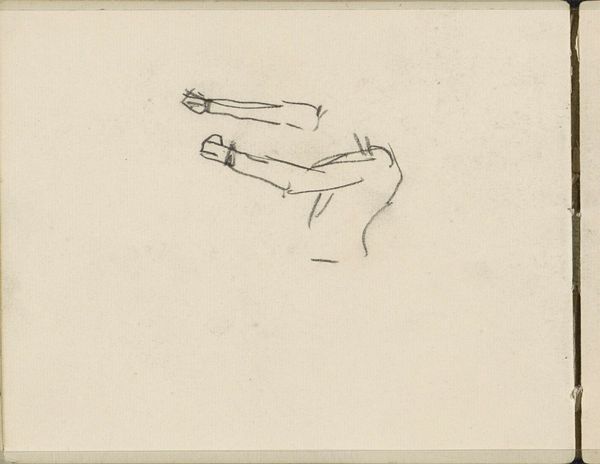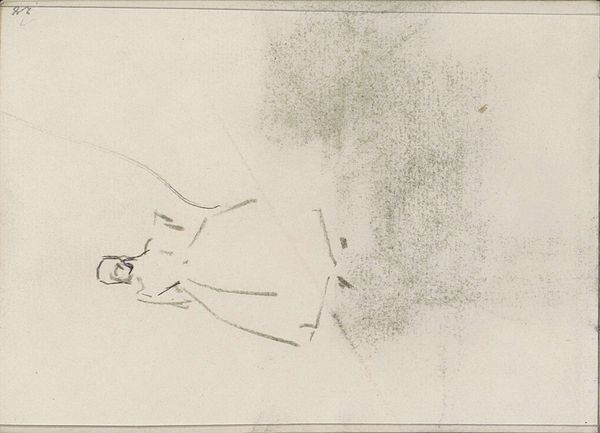
Copyright: Rijks Museum: Open Domain
Curator: Looking at "Onderbeen en bovenarm," created around 1892 by Julie de Graag, a sketch done in pencil on paper and currently housed here at the Rijksmuseum. Editor: It feels fragmented. The disembodied limbs, the stark contrast between the detailed leg and the faint outline of the torso... almost unsettling. Curator: Interesting. Note how the artist juxtaposes two distinct styles: the leg rendered with precise shading and the other figure, a mere suggestion. Semiotically, the complete leg could signify stability or groundedness. What meaning can we take away from such juxtaposition of precision and obfuscation? Editor: Considering De Graag's position as a female artist working within a patriarchal system at the time, the incompleteness could signify the limitations placed upon women artists—their ideas, forms or creations deemed worthy of attention only in fragments, or when presented in traditional, academic ways as represented by the leg. Curator: A potent interpretation. Formally, though, the contrast draws our eye, creating visual tension, using shadow and light. The negative space is just as crucial, activating our imagination to fill in the missing anatomy. Consider how De Graag challenges conventions of the female nude? Editor: Exactly. These studies—while formally intriguing—also reflect broader societal debates. Nude studies by female artists had to circumnavigate issues of display, voyeurism, and often had little access to funding from patronage circles which privileged their male counterparts. This makes me wonder, were the more complete and resolved parts intended for viewing whilst the studies for 'self'? Curator: The deliberate obscuring pushes back on the male gaze so dominant at the time. It subverts traditional representations while highlighting form. The sketch presents the form as unfinished—a study that we are viewing after hours—not unlike a performance being observed by us. Editor: Well, seeing it now framed as you say, does shift its tone for me somewhat from unsettling, as I originally expressed it, towards a more introspective engagement—a piece revealing more, through a great deal less! Curator: Precisely, a fascinating study, don't you think? Editor: It truly is. A telling fragment from both aesthetic and historic contexts!
Comments
No comments
Be the first to comment and join the conversation on the ultimate creative platform.
